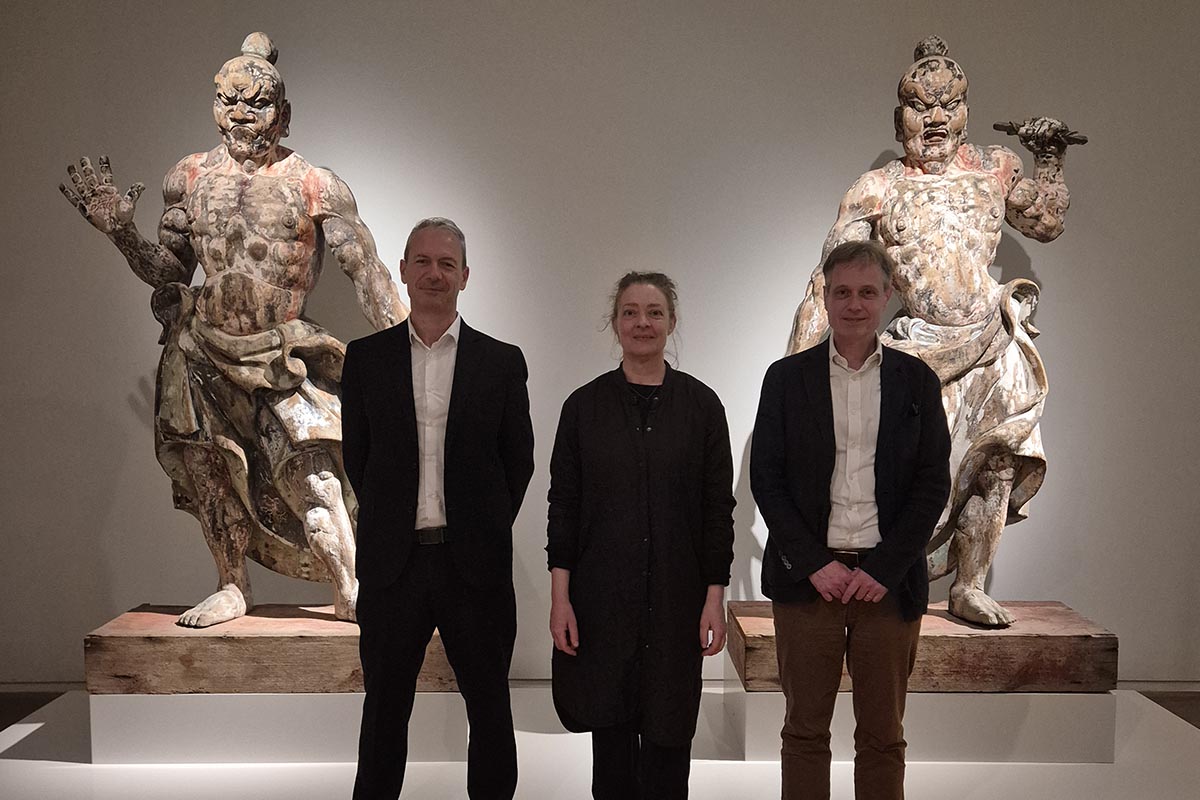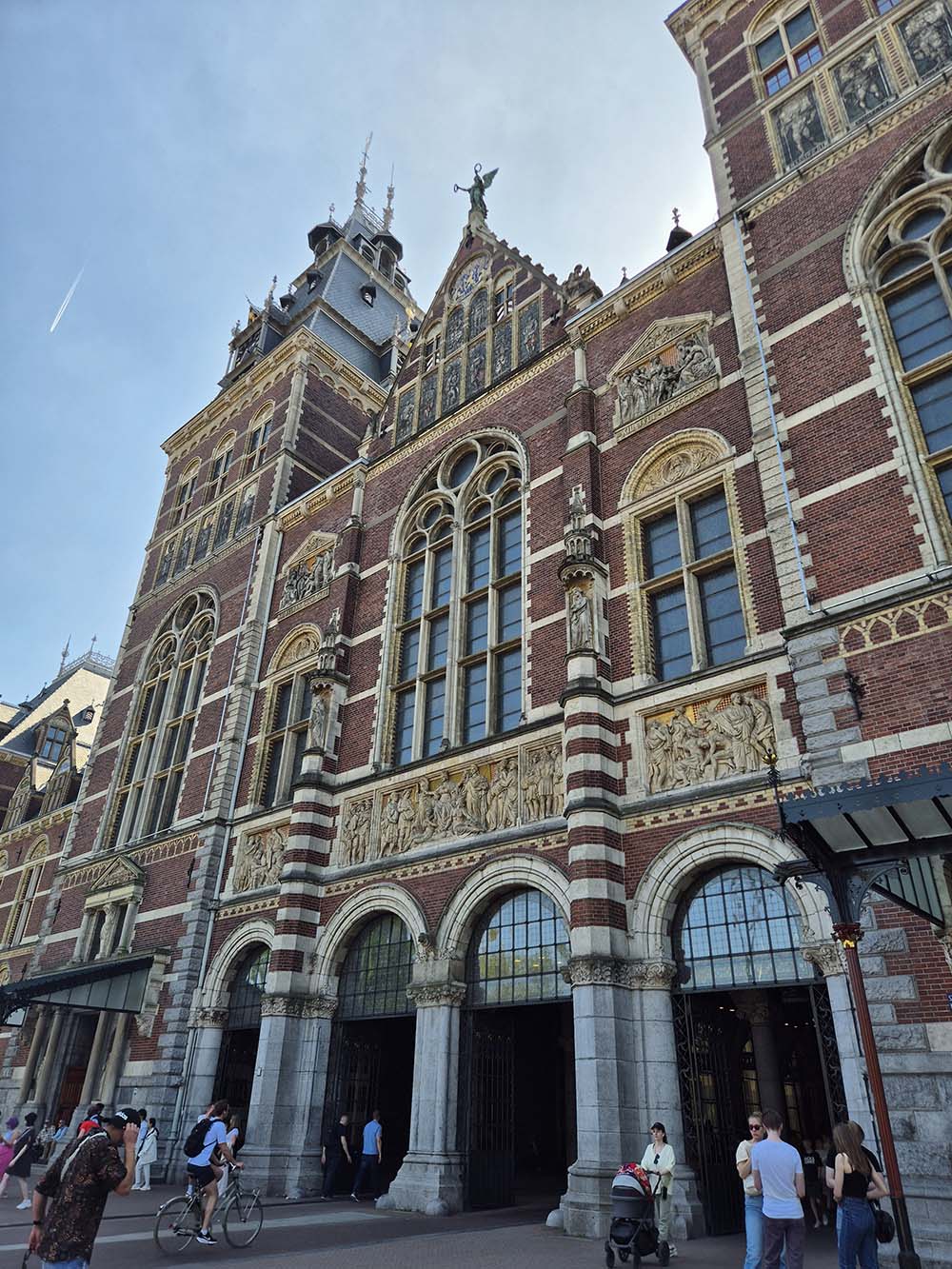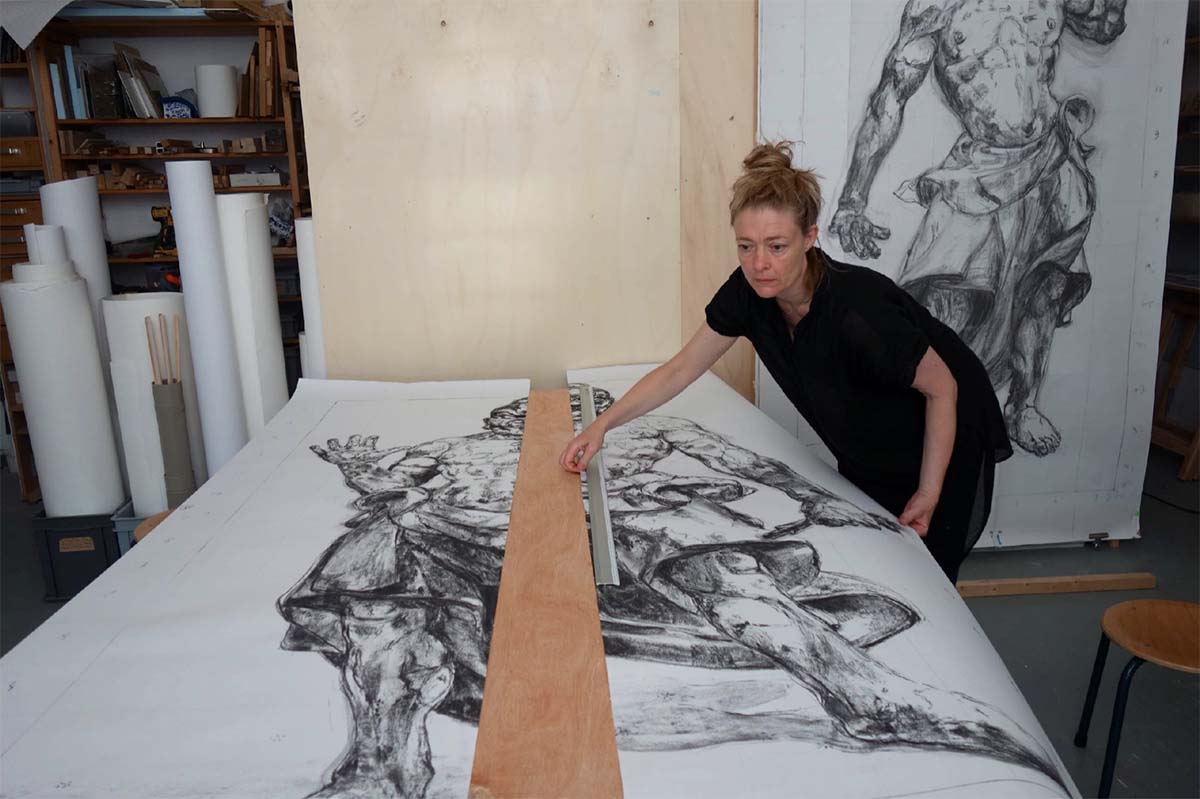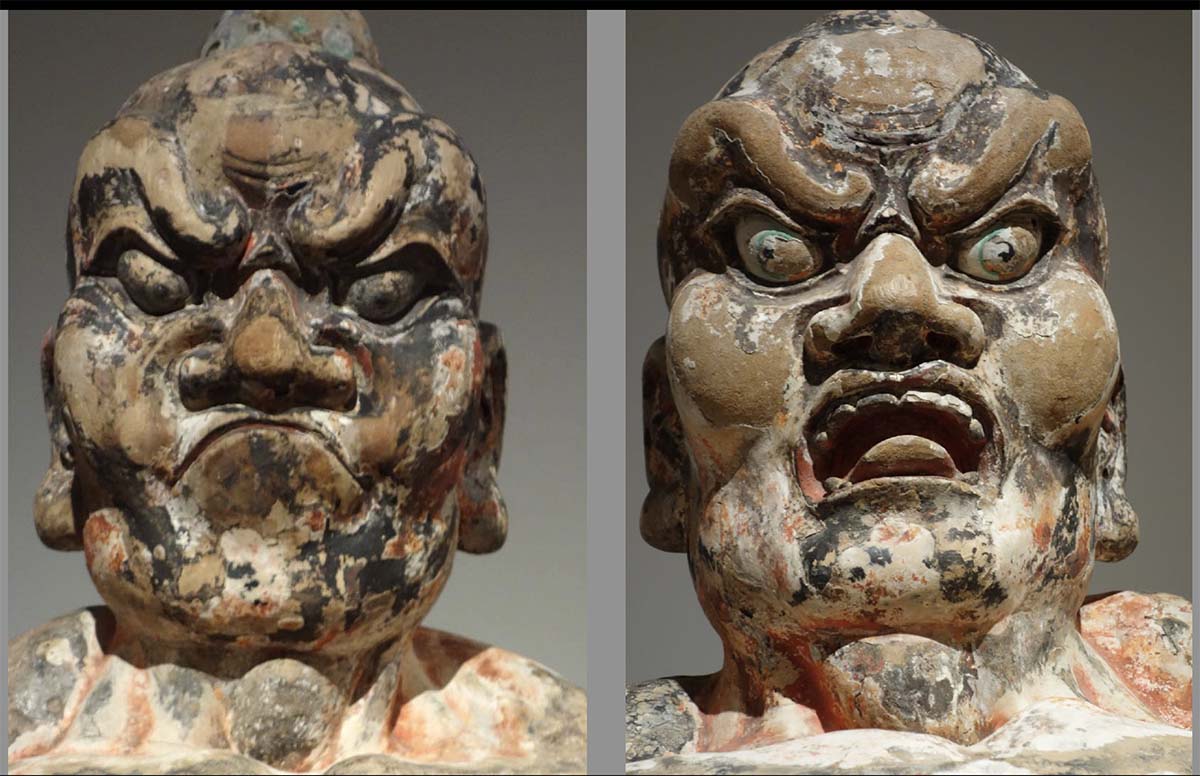Two Japanese temple guardians (Niozo) stand in the Rijksmuseum, Amsterdam. These guardians are from a temple in the remote village of Yokota, Shimane, where once a year, the gods of Japan convene.
In 2018 people from both the Netherlands and Japan brought the guardians back to the village in the form of Delft blue-tiled suits as part of a collaborative project called ‘Issho-ni/Tomo-ni’; re-creating ‘Pure Wisdom, Together’.
Captivated by serenity and strength
“Standing tall are the two statues who impose upon visitors a feeling of awe, tradition and the weight of history.
Standing before these ancient Japanese statues, one can only reflect on and imagine their roles guarding a grand temple gate in Japan. This is of course, exactly what they did.
Weathered surfaces tells stories of centuries past; carvings and features evoke reverence. Gazing upon these sentinels, a sense of awe washed over me as I looked on at seven hundred years of service, protection and admiration.
The Asia Pavilion’s surrounding atmosphere is silent but there is a sense of spiritual energy, inspiring a deep respect amongst visitors who travel to see and experience the statues for the cultural heritage they represent. Eyes linger, captivated by serenity and strength, connecting visitors to centuries of rituals and beliefs.” Phil Demack
Knowledge, wisdom and compassion
The Rijksmuseum acquired the two magnificent statues in 2007. 14th century wooden Japanese temple guardians that, for more than 700 years, stood in the temple gate (Niōmon) of the Iwaya-ji, a prominent Buddhist temple in Shimane ken, Japan.
A Niōmom is a gate at the entrance to a Japanese temple area and houses two Japanese temple guardians (Nio-zo): the Agyo-zo and UNgyo-zo.
A traditional Niōmon has the meaning of ‘gate’ (a house for temple guardians and ‘portal’) providing access to the fields of knowledge, compassion and wisdom). Whoever walks through the gate passing the guardians gains access to this field of knowledge, wisdom and compassion.
The sounds ‘A’ and ‘UN’ represent the first and last syllables of the Siddham script and together they signify all possible sounds and symbolise all knowledge, wisdom and compassion.
The first question to be asked is; are the guardians now merely artifacts to be observed in one of the world’s leading museums or if returned to their former home, will they take up their roles as guardians and protectors?
Secondly, if pilgrims pass through the gate in between the guardians gain access to wisdom, surely a return to Japan would be favourable for the Japanese and the Dutch involved with the project?
A Journey Back Home
Dutch artist Jikke van Loon first connected with the guardians in 2013, captivated by their silent vigil. Driven by a desire to send these guardians home, she initiated Project Issho-ni/ Tomo-ni, a transformative collaboration in 2018 and 2019 involving hundreds of participants in both nations.

Each participant painted a Delft blue tile, creating four life-sized tableaus measuring 2.25 meters high with a total of 540 tiles. On November 23, 2019, these vibrant, handcrafted tableaux were celebrated with a special ceremony in Yokota.
The guardians, reimagined through collective effort, will be returned on October 13th 2025, able to once again stand guard at their rightful place. (They are not in their rightful places yet: this will happen coming fall October 13th)
The project aimed to foster understanding across different worldviews and systems, emphasizing unity through shared action. The guardians weren’t just recreated in tiles—they were reborn through participation, embodying the spirit of Niō-ness—strength, protection, and mutual respect.
A future of unity
Although the Temple Guardians returned home it was impossible to place them in their former house, Iwaya-ji’s Niōmon as the gate needs rebuilding. However, a foundation in both Japan and the Netherlands has been established to enable the creation of a gate.
As their journey continues, the guardians serve as ambassadors—fostering cooperation, respect, and cultural remembrance. With 425 years of historical friendship celebrated this year, they embody a shared mission: honouring the past while looking toward a future of unity.
The long-standing relations with Japan have had a profound impact on the collections of the Rijksmuseum. Menno Fitski of the Rijksmuseum’s Asia Pavilion explains:
A late 18th-century group of Asian objects was among the first ingredients of what later became the Rijksmuseum collections and the collection today counts many trade objects such as porcelain and lacquerware.

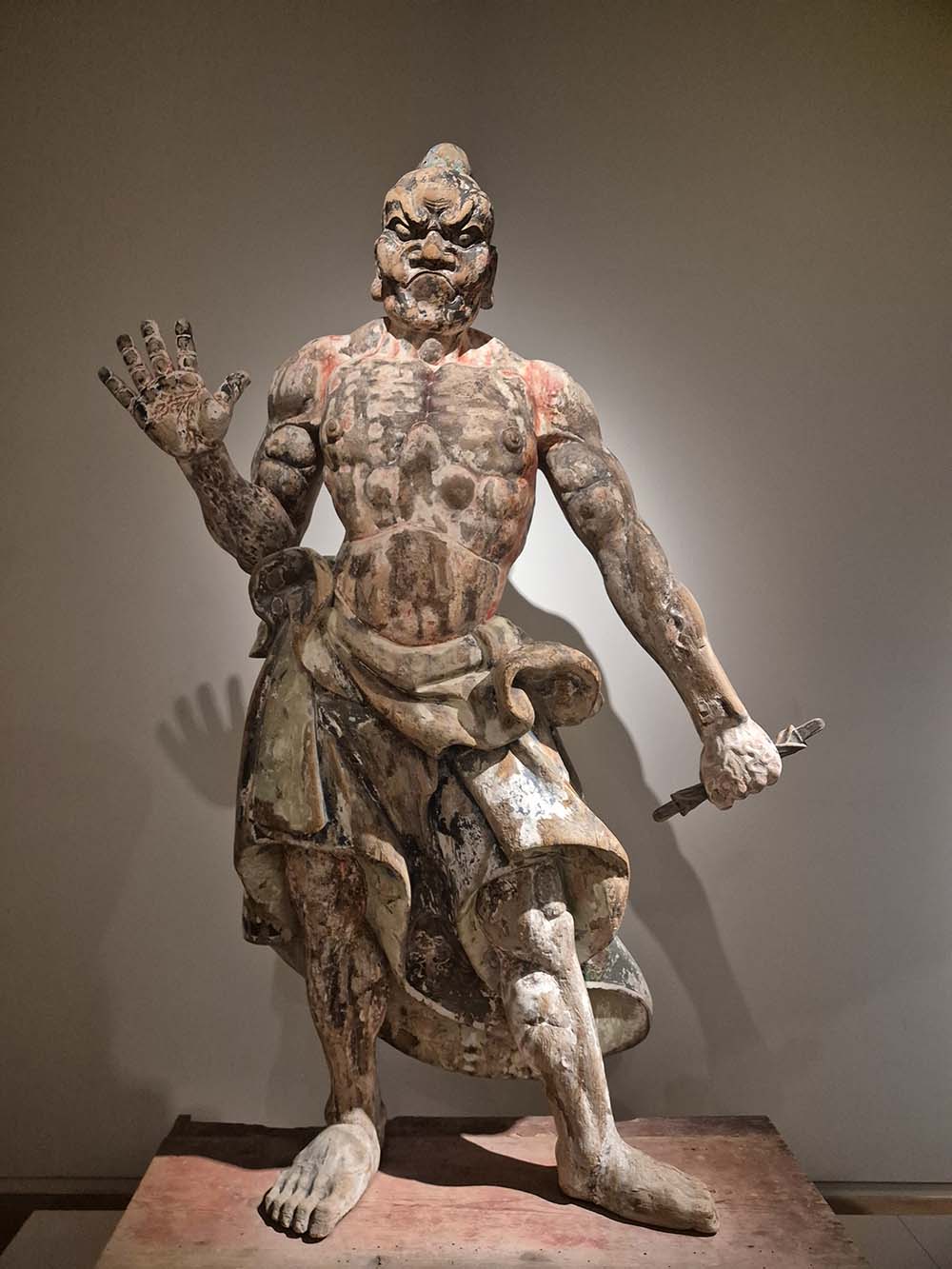
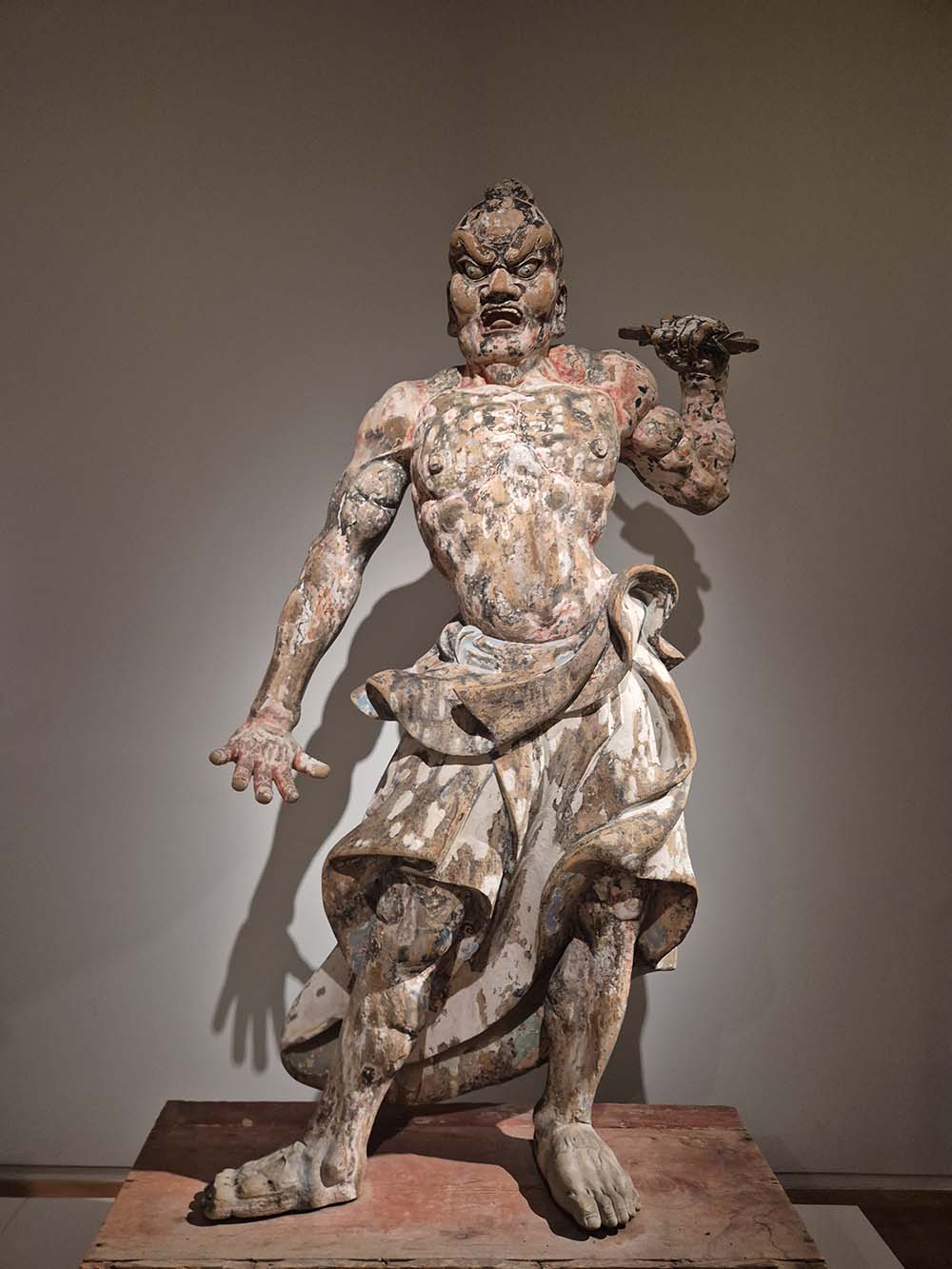

They relate of the more than 400 years of contact between our nations, which have left a distinct imprint on the Dutch interior and the production of decorative arts, such as Delftware.
Also, our collections bear witness to the historical ties with Japan and the friendship between the Netherlands and Japan, despite some difficult moments, continues to be strong until this day. I feel that the display of Japanese art in the Asian Pavilion of the Rijksmuseum bears witness to that.
A good example is the pair of temple guardian figures of impressive size that the Rijksmuseum acquired in 2007. They originate from a now defunct temple in Shimane prefecture and the arrival of these large, imposing wooden sculptures has sparked a tremendous response.
Jikke is a force of nature. With all her enthusiasm and energy, she has not only added a whole new layer to the sculptures in our museum, her project has also connected us to the place where the sentinels come from. I had not realised this so much with the purchase. The realisation has come through the bridge Jikke has built, confirming the friendship between two countries.
Menno Fitski, Head of Asian Art at the Rijksmuseum, Amsterdam
Visitors engage in very diverse ways with them, ranging from standing in awe before them, sharing their innermost feelings, to having larges tattooed images of them placed on their arms.
It is wonderful to see how art plays such an important role and no one has been more influential in this respect than the artist Jikke van Loon, who has set up a tremendous art project that involves a community effort to recreate the guardians in blue and white tiles, to be placed in their original location in the Japanese countryside.
In doing so, she has created a permanent link, allowing close relations to build: schools exchange their students, art and community projects flourish. This is what art can do. Museum objects are not static, but are actively involved in life. People drape their own stories onto them, which form layers of meaning that enrich our lives.

